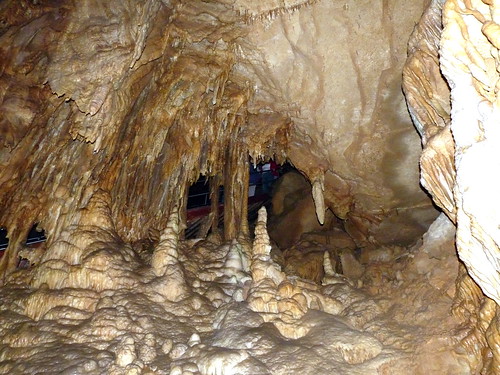Welcome to Geo 12. This is a place where we will share ideas and images based on the course. You will be required to make at least one post per week.
Monday, October 31, 2011
Sunshine Recorder
A sunshine recorder records direct sunlight as well as cloud covers at a given location. The glass sphere focuses the sun's rays burning a card inside. When the card is burnt, it indicates the total energy it recieved. The sunshine recorder is records sunlight in hours and cloud covers in octas.
Barometer
Rain Gauge
Weather vane
This is a weather vane. It measures the wind direction. The arrow points to the direction to show the cardinal wind direction. It does not have the units for it, just the direction like South, North, West and East.
An old, but handy invention!
 This is a rain gauge. It is used to measure precipitation, and is measured in millimeters.
This is a rain gauge. It is used to measure precipitation, and is measured in millimeters.The most official rain gauges have a tall cylinder with a funnel at the top that collects water into the measuring tube which has one tenth of the area of the top of the funnel. Today, forecasters and airports use this instrument which was invented over one-hundred years ago!
Barometer

A barometer measures air pressure it is a scientist instrument used in meterology. it can measure the pressure exerted by the atmosphere by using water, air, and mercury.
Sunshine Recorder
Weather Instrument
Rain Gauge
Barometer
Mammoth Cave
Anemometer

An Anemometer is a device for measuring wind speed, and is a common weather station instrument. There are two classes of anemometers; those for measuring the wind's speed, and those for measuring the wind's pressure, but as there is a close connection between the pressure and the speed, an anemometer designed for one will give information about both.
Weather Instrument
Weather Vane
barometer

A barometer is a scientfic instrument used in meteorology to nmeasure atmospheric pressure. It can measure the pressure exerted by the atmosphere using water, air or mecury. Pressure tendency can forecast short term changes in the weather. Nyumerous measurements of air pressure are used within surface weather analysis to help find surface troughs, high pressure systems, and frontal boundaries. A barometer messures air pressure in millibars.
Thermometer
Caves
Mechanical Weather Instruments
Barometer
Friday, October 28, 2011
Cave
Bermuda Cave

This is a very interesting looking cave photographed in Bermuda. There are plenty of stalactites which is limestone slowly dripping off the celing of the cave. This cave also has water in it. Limestone gets disolved by water.
Thursday, October 27, 2011
Cave

Vietnam's Son Doong is the world's largest cave known to man. It is located in Vietnamese jungle and is the worlds largest single passage cave yet found. At 262-by-262 feet (80-by-80 meters) in most places, the Son Doong cave beats out the previous world-record holder. The cave has a very large river that can be heard from outside the cave.
Eisriesenwelt Ice Caves
The Eisriesenwelt Ice Caves is one of the largest ice caves known to men. Eisriesenwelt is a natural limestone ice cave. It is located in the Tennengebirge Mountains near Salzburg in Australia. Eisriesenwelt was formed by the Salzach river. The river eroded passageways in the mountain. Also, the ice in the cave was formed by melting snow which drained into the cave and froze again during the winter time.
Mammoth Cave in Kentucky

This cave is founs in central Kentucky it is a US national park. it is the longest cave system in the world. Features in them include flowstone, limestone,colums stalagmite, and stalactite. How it formed was by solution and water seeping through cracks of rocks. Geologists estimate that the oldest part of the cave is 10 million years old.
Carlsbad Caverns

This is a picture of the Carlsbad Caverns in a National Park located near Carlsbad, New Mexico in the United States. Carlsbad Caverns includes the Big Room, a natural limestone cave chamber which is the seventh largest cave chamber in the world. The caverns are decorated with stalactites, stalagmites, columns, and an incredible variety of other formations like flowstones that can be seen by several easily accessible trails. Over time, fracture in the ancient limestone sedimentation appeared, allowing mineral-laden water to cut through the rock and form the caverns.
Mammoth Cave, Kentucky
 This is a picture of the Rotunda Room in Mammoth Cave. Mammoth Cave is found in Central Kentucky, and is the largest cave system known in the world. This cave developed in thick lime stone strata capped by a layer of sandstone which makes this cave system remarkably stable. Features found inside of Mammoth Cave are stalactites, stalagmites, flowstone, columns, helictites, travertine dams and several types of gypsum formations.
This is a picture of the Rotunda Room in Mammoth Cave. Mammoth Cave is found in Central Kentucky, and is the largest cave system known in the world. This cave developed in thick lime stone strata capped by a layer of sandstone which makes this cave system remarkably stable. Features found inside of Mammoth Cave are stalactites, stalagmites, flowstone, columns, helictites, travertine dams and several types of gypsum formations.Monday, October 24, 2011
PLAYA LAKE
Groins
This is a picture of groins built to trap sand. They are man made and it is made to prevent net loss of sand on beach from longshore drift.
SOIL CREEP
Barrier Beach
This is a barrier beach. A sandspit is formed by longshore drift. Then the sandspit gets bigger and bigger and cuts off a bay between headlands; a barrier beach is formed. The lake between the bay and barrier beach is callled lagoon.
Sandspit
Sand Spit

This is a sandspit. A sand spit is a depositional landform found off coasts. A sand spit connects at one end to land and the other goes out to sea. A sandspit is formed by longshore drift
SEA STACK
Longshore drift diagram

Longshore drift is the transportation of sediments it is generally sand but may be other sediments. The sediments travel along a coast at an angle to the shoreline, whichisdepenedent on prevailing wind direction. Also known as longshore transport or littoral drift.
Sandspit
Spit
Tombolo
Tombolo

This is a picture of a tombolo, a tombolo is a deposition land form formed by longshore drift in which an island is attached to the mainland by a narrow piece of land such as a spit or bar. This narrow spit or bar is what makes tombolos very obvious, and easy to distinguish from other coastal land forms.
sand spit
Sea Stacks
Longshore Drift
Sea Wall
Subscribe to:
Comments (Atom)





































